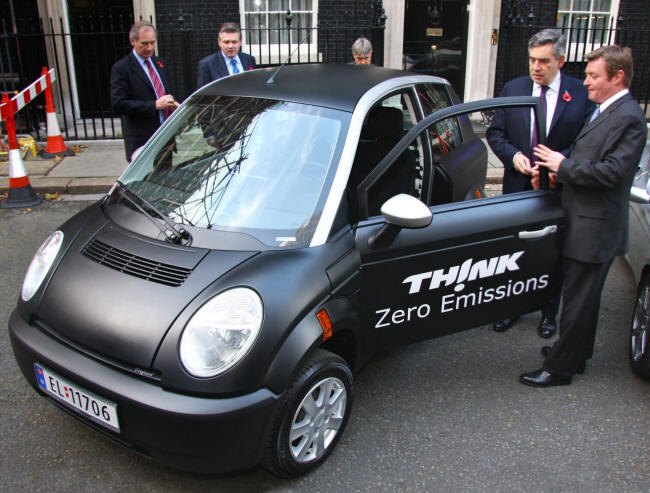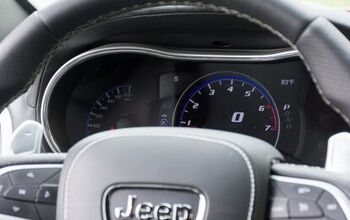Think About It
Say you’re a small electric car maker in bankruptcy restructuring. You have no current production, you’ve only ever built a couple thousand street-legal cars and you’re operating on $6M in interim financing. With credit markets in turmoil and the car biz taking a beating, what’s a game changer to do? Luckily for you, the various governments of the United States seem to have acquired the reputation of being run by the kind of people PT Barnum would have loved. And as Autoweek reports, this opportunity has even the tiniest mice in global auto game warming up their vocal cords, hoping to pull off an American taxpayer-assisted roar.
The scenario above represents the very same conditions that Norwegian Ford spin-off Think finds itself in. Think’s CEO Richard Canny tells AW that his firm is “in talks” with eight US states in hopes of establishing a US technical center and assembly plant. Why? “Federal and state incentives for the manufacture of batteries and electric vehicles are a factor in the firm’s decision to expand its North American presence.” And “in talks” sounds so much better than “looking for the biggest sucker.” Canny also revealed plans to file for Department of Energy Section 136 loans.
The plan, as such, is to introduce Think’s updated EVs to the US market; to fleets and demonstrators in 2010 and the retail market in 2011. Current production capacity is 5k per year. In Norway. Think’s current model is an updated version of the vehicle offered in California by Ford, and is fully compliant with European crash test standards. The EV’s battery range is currently 100 miles, with top speeds hitting a heady 62 mph. But, says Canny, “the company aims to increase top speed to 70 or 75 mph and to further improve driving range and acceleration.”
“The technology is ready, there’s expanding awareness and interest in the marketplace, so all it takes is the financing to make it happen,” says Think’s plucky CEO. “Unfortunately, the global economic crisis arrived just as the company was entering its most capital-intensive phase.” Not that Think is looking at an all-government solution to this problem. “We’re still pursuing private investment,” says Canny. “The Department of Energy loan is not something we see as a substitute for capitalization, but a supplement that makes our operating plan going forward more effective.” But since private loans aren’t exactly readily available right now to firms in Think’s precarious (to put it nicely) postition, it’s up to governments to blink first.
More by Edward Niedermeyer
Latest Car Reviews
Read moreLatest Product Reviews
Read moreRecent Comments
- SCE to AUX Over the last 15 years and half a dozen vehicles, my Hyundais and Kias have been pretty cheap to maintain and insure - gas, hybrid, and electric.I hate buying tires - whose cost goes by diameter - and I'm dreading the purchase of new 19s for the Santa Fe.I also have an 08 Rabbit in my fleet, which is not cheap to fix.But I do my own wrenching, so that's the biggest factor.
- MaintenanceCosts '19 Chevy Bolt: Next to nothing. A 12v battery and a couple cabin air filters. $400 over five years.'16 Highlander Hybrid, bought in 2019: A new set of brakes at all four corners, a new PCV valve, several oil changes, and two new 12v batteries (to be fair, the second one wasn't the car's fault - I had the misfortune of leaving it for a month with both third-row interior lights stealthily turned on by my kid). Total costs around $2500 over five years. Coming due: tires.'11 BMW 335i, bought in late 2022: A new HID low beam bulb (requiring removal of the front fascia, which I paid to have done), a new set of spark plugs, replacements for several flaking soft-touch parts, and two oil changes. Total costs around $1600 over a year and a half. Coming due: front main seal (slow leak).'95 Acura Legend, bought in 2015: Almost complete steering and suspension overhauls, timing belt and water pump, new rear brakes, new wheels and tires, new radiator, new coolant hoses throughout, new valve cover gaskets, new PS hoses, new EGR valve assembly, new power antenna, professional paint correction, and quite a few oil changes. Total costs around $12k over nine years. Coming due: timing belt (again), front diff seal.
- SCE to AUX Given this choice - I'd take the Honda Civic Sport Hatchback (CVT). I 'built' mine for $28777.To my eye, the Civic beats the Corolla on looks these days.But for the same money, I can get an Elantra N-Line with 7-speed DCT, 201 HP, and good fuel economy, so I'd rather go for that.
- Dr.Nick The cars seem really expensive with tight back seats and Cadillac was on the list of the highest price gouging dealers coming out of COVID. I don’t understand the combination, shouldn’t they be offering deals if they are not selling?
- Dr.Nick Too bad the Turbo XT isn’t coming. The Outback Turbo is not bad at all, would be a lot of fun in the shorter Forester.































Comments
Join the conversation
Like we need another premium golf cart on the road enjoying temporary easements of the rules and regulations that were put in place to keep people from getting killed.
But Tata will be there first.